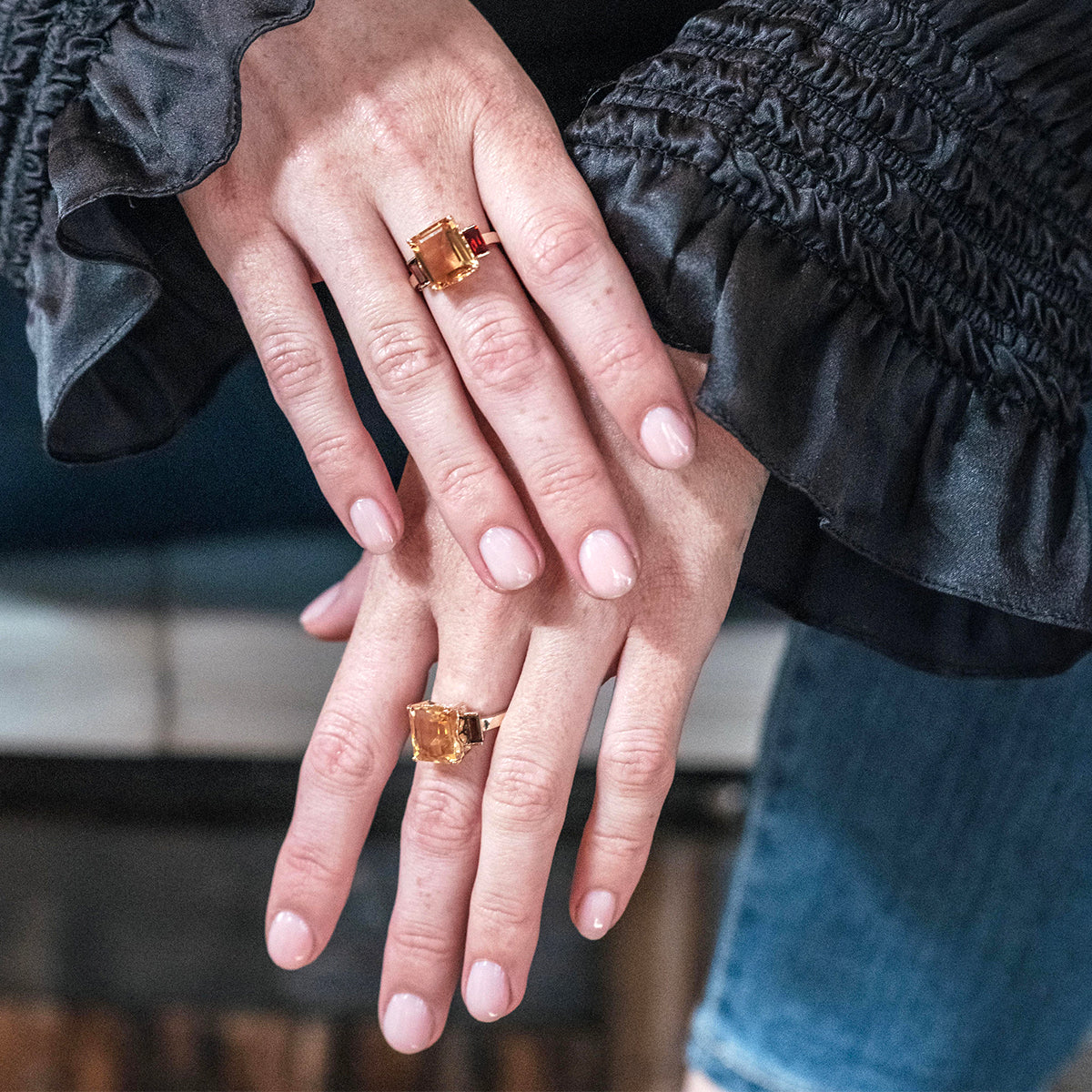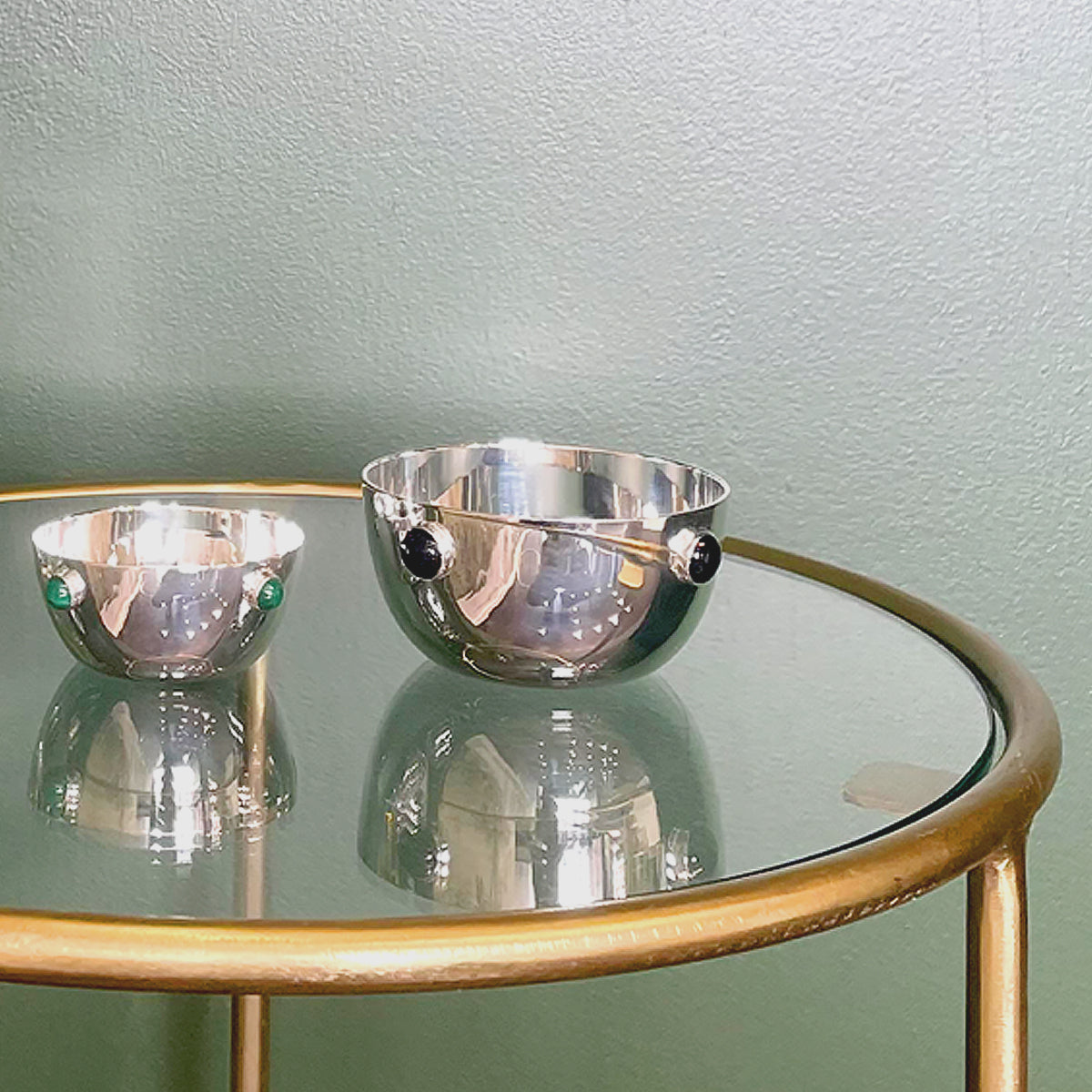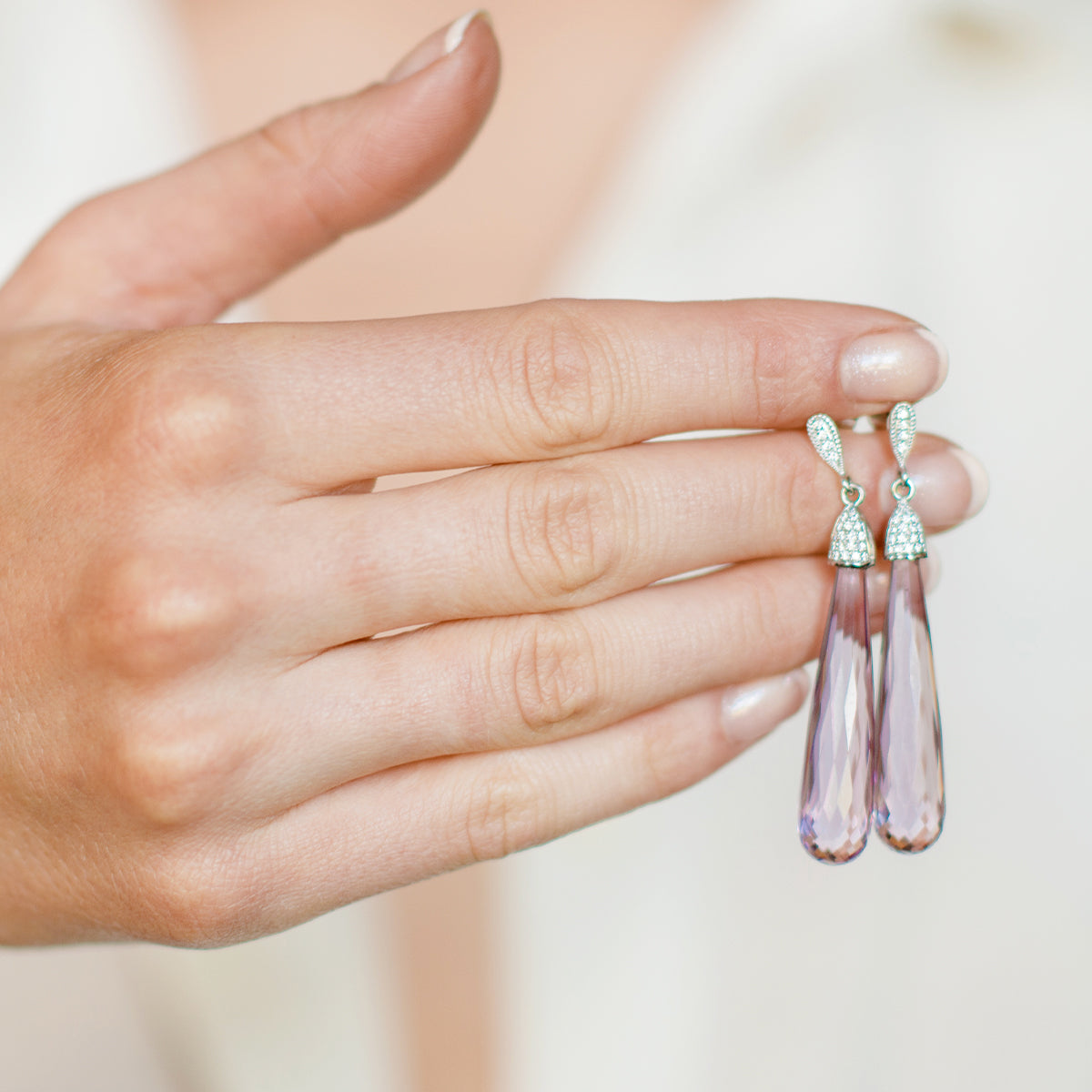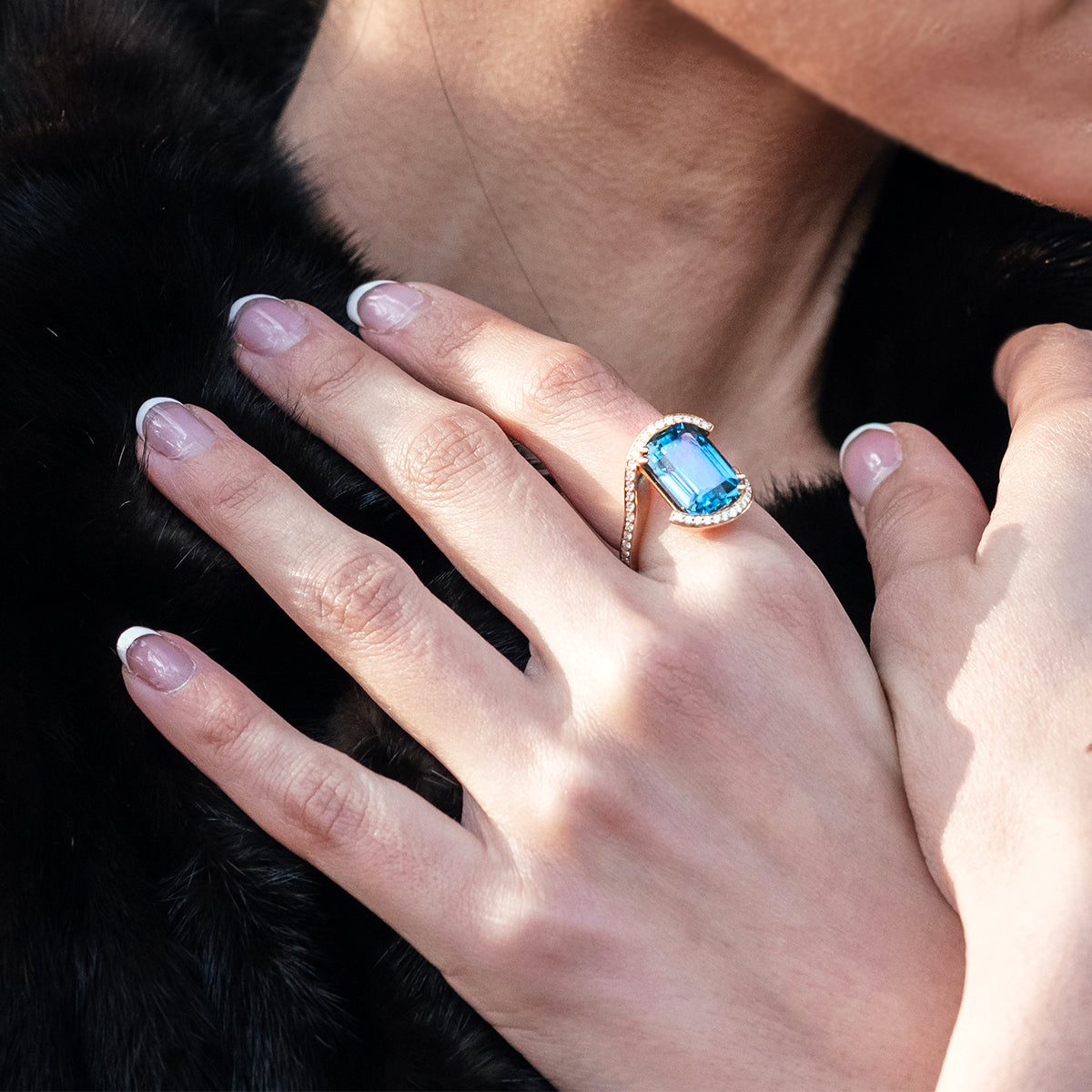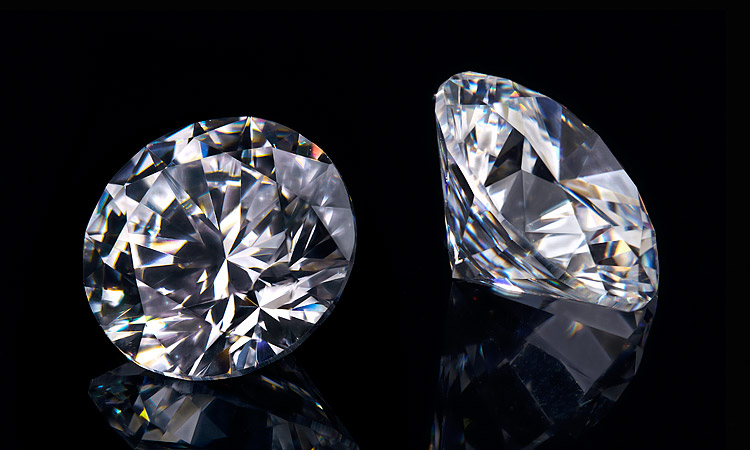
Diamond Overview
The word "diamond" originates from the ancient Greek word "adamas," meaning "unconquerable" or "invincible." This Greek term was used to describe the hardest substance known at the time, which we now know as diamond. Over time, the word evolved into "diamond" as it spread through various languages and cultures. Diamonds have been highly valued throughout history for their beauty, brilliance, and durability, and the word itself reflects this sense of enduring strength and resilience.
Diamond Birthstone
Diamond is the exquisite birthstone for April. Its timeless allure and association with purity and clarity align perfectly with the fresh beginnings of spring, marking April as a month of renewal and promise. Thus, diamond stands as a fitting gemstone to honour the April-born, reflecting their enduring beauty and enduring spirit.
Diamond Hardness
Diamond is renowned for its exceptional hardness. It ranks as a 10 on the MOHs scale of mineral hardness, making it the hardest naturally occurring substance known to mankind. The Mohs scale, devised by German mineralogist Friedrich Mohs in 1812, is a qualitative scale used to assess the scratch resistance of minerals.
Diamond History
The earliest known reference to diamonds comes from ancient India, where they were likely mined as early as the 4th century BCE. India was the primary source of diamonds for much of ancient history, and they were highly valued for their brilliance and symbolism. In ancient India, diamonds held great significance and were associated with various religious and cultural beliefs. They were believed to possess mystical powers and were often worn by rulers and nobility as symbols of strength, purity, and protection.Indian diamonds were traded along ancient trade routes, reaching destinations such as the Middle East, Europe, and China. The trade in diamonds contributed to the wealth and prosperity of many civilisations along these routes. The art of diamond cutting likely originated in India, where artisans developed techniques to shape and polish rough diamonds, enhancing their brilliance and beauty. Diamonds are mentioned in various ancient texts, including Sanskrit writings, Greek literature, and Roman accounts. These references highlight the significance of diamonds in ancient societies.Diamonds adorned the crowns, jewellery, and regalia of monarchs and rulers throughout history. They symbolised power, wealth, and prestige and were often passed down as treasured heirlooms. While diamonds were known in India for centuries, significant diamond deposits were later discovered in other parts of the world. In the early 18th century, diamonds were found in Brazil, leading to a shift in the global diamond trade.
Diamond Origins
Historically, diamonds were first mined in India, where alluvial deposits along rivers yielded precious stones. The Golconda region, in particular, was renowned for producing some of the world's most famous diamonds, including the Koh-i-Noor and the Hope Diamond. Later discoveries in Siberia, Brazil, Botswana, Angola, Canada and South Africa significantly increased the global supply of diamonds.
Currently, the Aykhal mine in Siberia is considered by many as the biggest diamond mine globally. Aykhal is situated in a region renowned for its abundant diamond reserves. The mine utilises a combination of open-pit and underground mining methods, leveraging advanced equipment and techniques to access diamond-rich ore bodies buried beneath the surface. One of Aykhal's distinguishing features is its ability to yield diamonds of exceptional quality.
In Botswana, the Orapa and Jwaneng mines are some of the world's richest diamond mines, contributing significantly to global diamond production.Historically, South Africa has been a major diamond producer, particularly from the Kimberley region and the famous Premier Mine (now closed), which produced the Cullinan Diamond, the largest gem-quality diamond ever found. In Canada, The Diavik and Ekati mines are located in this region and are significant contributors to Canada's diamond production.
Diamond Types
Type Ia Diamonds
Type Ia diamonds are the most common type, making up approximately 98% of all natural diamonds. They contain nitrogen atoms that often result in shades of yellow or brown. However, some Type Ia diamonds can also be colourless or exhibit faint hues. Type Ia diamonds are the most common and can be found in diamond-producing regions worldwide. Diamond mines in countries such as Botswana, South Africa, Russia, Canada, Australia, and various African nations yield significant quantities of Type Ia diamonds.

Type IIa Diamonds
Type IIa diamonds are chemically the purest form of diamond, which can impart a blue or gray coloration to the diamond. Type IIa diamonds are exceptionally rare, comprising only about 1-2% of all natural diamonds. Type IIa diamonds are relatively rare and are typically found in regions where conditions favour the formation of diamonds with minimal nitrogen impurities. Notable sources of Type IIa diamonds include diamond mines in countries such as Botswana, South Africa, Russia (particularly Yakutia), Canada (specifically the Northwest Territories), and Australia.

Type Ib Diamonds
Type Ib diamonds can range from yellow to brown, orange, or even pink. Type Ib diamonds are relatively rare, comprising around 0.1% of all natural diamonds. Type Ib diamonds are less common than Type Ia diamonds but can be found in various diamond-producing regions. Diamond mines in countries such as South Africa, Australia, Angola, Namibia, and the Democratic Republic of Congo (DRC) may yield Type Ib diamonds.

Type IIb Diamonds
Type IIb diamonds have a distinctive blue coloration, ranging from pale blue to deep blue or even grayish-blue. These diamonds are exceedingly rare, accounting for less than 0.1% of all natural diamonds. They're often referred to as "blue diamonds". Notable sources of these precious diamonds include diamond mines in countries such as South Africa, India, Brazil, and Australia. However, the majority of famous blue diamonds have been discovered in historic diamond mines in India and Golconda in present-day India and neighbouring regions.

Diamond Meaning
Famous Diamonds
The Golden Jubilee Diamond, a magnificent 545.67-carat gemstone, stands out as one of the largest and most stunning diamonds ever discovered. Its deep brownish-yellow colour, attributed to nitrogen impurities, adds to its allure. Unearthed in the Premier Mine of South Africa in 1985, meticulous cutting and polishing transformed it into a mesmerising cushion-cut masterpiece, renowned for its flawless clarity. Similarly, the Elizabeth Taylor Diamond, formerly known as the Krupp Diamond, weighs 33.19 carats and boasts flawless clarity. Gifted to Elizabeth Taylor by Richard Burton, it became an icon of Hollywood glamour. Both diamonds symbolise opulence, elegance, and timeless beauty, captivating the world with their remarkable brilliance and historical significance.
Celebrities Wearing Diamonds
Princess Tessy epitomised elegance and refinement as she posed for Hello! Magazine adorned with a selection of our finest jewellery pieces. From the striking Bespoke Rubellite and White Diamond Ring, showcasing the captivating beauty of rubellite gemstone paired with sparkling diamonds, to the effortless charm of the Smoky Quartz Maxi Ring from our South of France Collection, she effortlessly exuded grace and sophistication. The timeless allure of our Diamond Bracelet from the Diamond Collection adorned her wrist with understated luxury.
Diamond Jewellery in the Press with Augustine Jewels
Recently, Augustine Jewels was showcased in the Societe's Christmas Gold List where our Purple Amethyst and Diamond Earrings where place at the top of the list.

Purple Amethyst and Diamond Earrings, English Gardens Collection, £850
We were also featured in the Mayfair Musings Christmas Gift Guide with our beautiful Citrine and Diamond Earrings stealing the spotlight!

Citrine and Diamond Earrings, English Gardens Collection, £850
Diamond Jewellery at Augustine Jewels

Diamond Drop Earrings, £700, Diamond Collection

Diamond Halo Pendant, £1,800, Diamond Collection
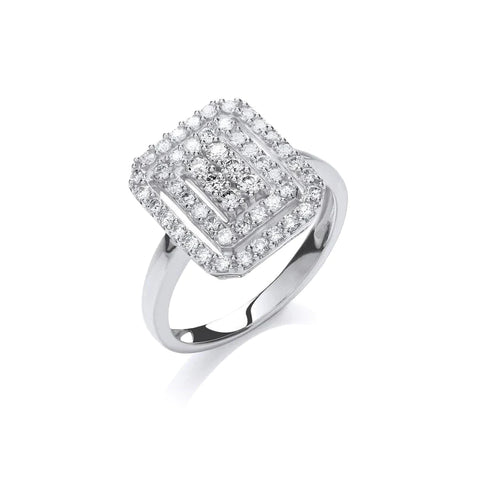
Diamond Pavé Square Ring, £1,350, Diamond Collection
Bespoke Diamond at Augustine Jewels

Rubellite and Diamond Ring, Bespoke

Yellow Gold and Diamond Ring, Bespoke
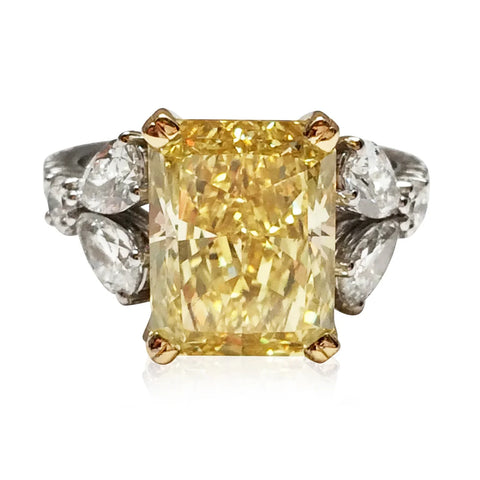
1. Diamonds in Space: While diamonds are commonly associated with Earth, scientists have discovered that they also exist in space. Some meteorites contain microscopic diamonds that were formed in the extreme conditions of space, such as the impacts between celestial bodies. These space diamonds provide valuable insights into the processes occurring in the early solar system and beyond.
2. Diamonds on Ice: In 1998, scientists discovered a rare form of water ice called "Ice-VII" trapped within diamonds deep within the Earth. Ice-VII forms under extremely high pressures and temperatures, similar to those found in the Earth's mantle. This discovery suggests that there could be vast reservoirs of water deep beneath the Earth's surface, locked within diamonds.
3. Diamonds in Pop Culture: Diamonds have long been celebrated in popular culture, often as symbols of wealth, glamour, and luxury. From Marilyn Monroe's iconic song "Diamonds Are a Girl's Best Friend" to Rihanna's hit song "Diamonds," these precious gems have been immortalised in music, movies, and literature, capturing the imagination of audiences worldwide.
4. The Largest Diamond Ever Found: The largest diamond ever discovered is the Cullinan Diamond, found in South Africa in 1905. Weighing an astounding 3,106 carats (about 1.37 pounds or 621.35 grams), it was named after the chairman of the mining company, Thomas Cullinan. The diamond was eventually cut into several large pieces, with the largest ones adorning the British Crown Jewels, including the Great Star of Africa and the Lesser Star of Africa.
5. Diamonds in Technology: Diamonds play a crucial role in various cutting-edge technologies, including quantum computing and high-performance electronics. Synthetic diamonds are used as heat sinks in electronic devices to dissipate heat efficiently. Moreover, researchers are exploring the potential of using diamond-based materials in next-generation computing technologies due to their unique quantum properties, offering exciting possibilities for faster and more efficient computing systems.
